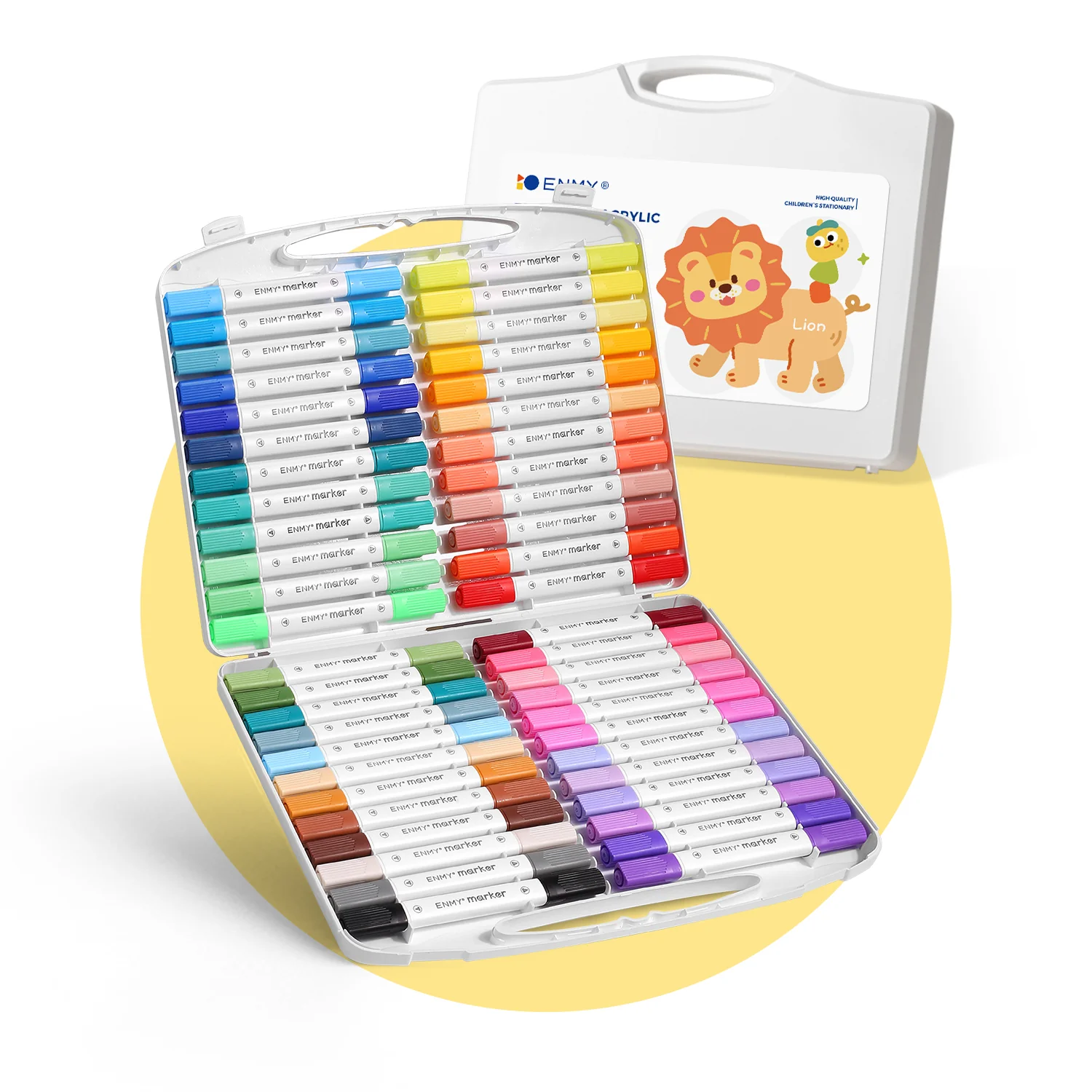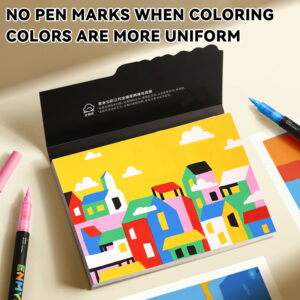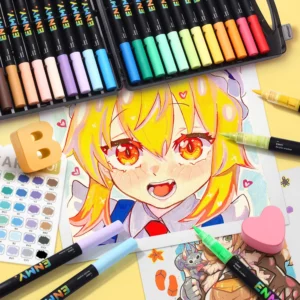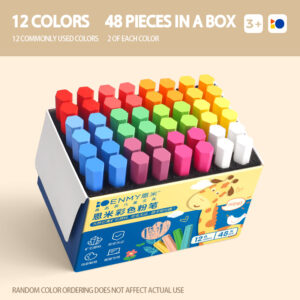Marker pens, as indispensable aids in the fields of creativity and art, have secured a vital position in painting, design, writing, and marking, thanks to their rich colors, smooth strokes, and portability. From being simple writing tools initially to becoming versatile artistic creation instruments with a wide range of types and functions today, the development of marker pens is filled with innovation and transformation.
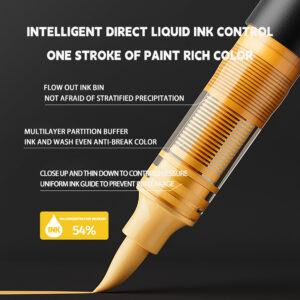
The origin of marker pens can be traced back to the end of the 19th century. At that time, they emerged as a writing tool, with early products based on oil-based inks, featuring thick strokes and mainly used in engineering drawing. The properties of oil-based inks allowed them to leave clear and long-lasting marks on drawings, meeting the requirements of the engineering field for accuracy and durability in marking. However, due to drawbacks such as slow drying of the ink and easy penetration of paper, their application in other fields was limited.
The early 20th century witnessed a significant revolution in the industry with the advent of water-based marker pens. Water-based inks, which are bright in color, easy to use, can quickly show color on paper, and dry relatively fast without causing excessive penetration of the paper, quickly gained popularity in the art and education sectors. Artists found that water-based marker pens could easily draw fine lines and soft color transitions, bringing more possibilities to their creations. In educational settings, teachers and students also favored them for their convenience and rich colors, using them for classroom demonstrations and homework drawing.
The mid-20th century was a golden period for the development of the marker pen industry. During this stage, the production technology of marker pens improved significantly. In terms of ink formulations, researchers continuously optimized them, leading to a qualitative leap in the color saturation, stability, and durability of the inks. For example, by improving the grinding process of pigment particles and the use of additives, the colors became brighter and less likely to fade. In pen body design, ergonomic principles began to be applied, making the shape and thickness of the pen body more suitable for the hand, so that it was not easy to feel fatigued even when held for a long time. The material and shape of the pen tips also became diversified, with different types such as fine tips, thick tips, and slant tips to meet users’ different needs for line thickness and shape during writing and painting.
In 1953, the invention by New Yorker Sidney N. Rosenthal revolutionized marker pens once again. He combined a glass bottle filled with permanent ink with a felt wick to create a tool that could leave saturated marks on most surfaces, naming it the “Magic Marker”. This marker pen attracted widespread attention as soon as it was launched. Its unique feature was that it could write on various materials such as leather, cloth, thick paper, and wood, greatly expanding the application range of marker pens. Subsequently, more similar products emerged on the market with more abundant ink types, and some products’ inks could be used for writing on thin paper, meeting the needs of different user scenarios.
In 1962, Yukio Horie, an employee of Tokyo Stationery Company, invented the modern fiber-tip marker pen. This pen tip has good flexibility and water absorption, can release ink evenly, making writing and painting more fluent, and has become a classic design that is still widely used today. In 1963, the German company Schwan – Stabilo invented the highlighter. Its ink shows bright fluorescent effects under ordinary light, specially used for marking text, and quickly became popular in office and study scenarios. In the 1970s, fine-line marker pens also began to appear, further enriching the types of marker pen products and meeting the needs of designers, illustrators, etc., for detailed depiction.
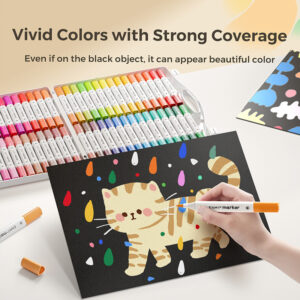
Over time, the types of marker pens have been continuously subdivided. Permanent marker pens can write on various surfaces such as glass, plastic, metal, and stone, with long-lasting and friction-resistant ink, and are often used for marking items and drawing outdoor signs. Dry-erase marker pens are specially designed for whiteboards, with fast-drying ink that can be easily erased with a dry sponge or cloth, widely used in teaching, meeting discussions, and other scenarios. Watercolor marker pens combine the characteristics of watercolor paints, with good 晕染 effects, can create an artistic atmosphere similar to watercolor paintings, and are loved by painting enthusiasts. Alcohol-based marker pens, with alcohol as the solvent, have bright colors and high fusion, and are widely used in professional fields such as animation drawing and clothing design. Through the superposition and fusion of different colors, they can create rich color layers and unique artistic effects.
In addition, to meet consumers’ pursuit of environmental protection and health, non-toxic and biodegradable marker pen products have gradually entered the market. These environmentally friendly marker pens use biodegradable pen body materials and safe and non-toxic ink formulations, reducing environmental pollution and potential harm to the human body, and are well received by the market. Some marker pen products have also integrated touch technology, making them not only usable for traditional writing and painting but also as styluses for electronic devices, realizing digital creation and further expanding the functional boundaries of marker pens.
Today, marker pens have become important tools for people around the world to express creativity and convey information. From children in school classrooms using them to depict colorful dreams, to professional designers using them to outline creative blueprints; from being used in offices for document marking and meeting minutes, to street artists using them for graffiti creation in urban corners, marker pens are everywhere. Their development history has witnessed the progress of science and technology, changes in market demand, and the continuous evolution of human needs for creative expression. It is bound to continue to innovate in the future, bringing more surprises to people’s lives and creations.


